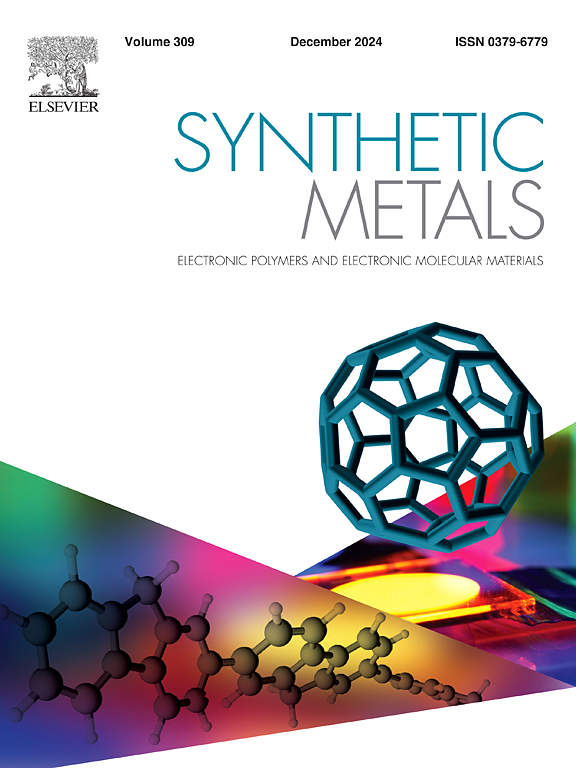From quenched to superradiant emission: Temperature-induced molecular rearrangement in an anthracene containing statistical copolymer
IF 4.6
3区 材料科学
Q2 MATERIALS SCIENCE, MULTIDISCIPLINARY
引用次数: 0
Abstract
We have measured the photoluminescence spectra of an anthracene-containing statistical copolymer, AnE-PV stat. Our results reveal a striking evolution of the pure electronic transition, from its complete absence at 77 K to a superradiant emission dominating at room temperature. This transition in emission pattern is attributed to a molecular rearrangement from H-aggregate formation at 77 K to J-aggregate formation at room temperature, characterized by excitonic bandwidths of 0.18 eV and 0.26 eV, respectively. We introduce a simple model incorporating the role of temperature in modulating intermolecular coupling via molecular displacement. This model elucidates how temperature governs both the magnitude and sign of dipole-dipole molecular interactions. A modified Franck-Condon analysis is employed to quantify the intermolecular coupling, excitonic bandwidth, and the number of coherently interacting molecules responsible for superradiance. Our findings reveal coherent interactions among approximately three molecules. These insights underscore the fundamental influence of thermal effects on the photophysical properties of molecular assemblies, offering a quantitative framework for controlling excitonic behavior in conjugated systems through temperature-induced aggregation.
从淬火到超辐射发射:含蒽统计共聚物中温度诱导的分子重排
我们测量了含蒽统计共聚物AnE-PV stat的光致发光光谱。我们的结果揭示了纯电子跃迁的惊人演变,从77 K时完全不存在到室温下占主导地位的超辐射发射。这种发射模式的转变归因于分子重排,从77 K下的h聚集体形成到室温下的j聚集体形成,其特征是激子带宽分别为0.18 eV和0.26 eV。我们介绍了一个简单的模型,其中包含了温度通过分子位移调节分子间耦合的作用。该模型阐明了温度如何控制偶极子-偶极子分子相互作用的大小和符号。采用改进的frank - condon分析来量化分子间耦合、激子带宽和产生超辐射的相干相互作用分子的数量。我们的发现揭示了大约三种分子之间的相干相互作用。这些见解强调了热效应对分子组装的光物理性质的基本影响,为通过温度诱导聚集控制共轭系统中的激子行为提供了定量框架。
本文章由计算机程序翻译,如有差异,请以英文原文为准。
求助全文
约1分钟内获得全文
求助全文
来源期刊

Synthetic Metals
工程技术-材料科学:综合
CiteScore
8.30
自引率
4.50%
发文量
189
审稿时长
33 days
期刊介绍:
This journal is an international medium for the rapid publication of original research papers, short communications and subject reviews dealing with research on and applications of electronic polymers and electronic molecular materials including novel carbon architectures. These functional materials have the properties of metals, semiconductors or magnets and are distinguishable from elemental and alloy/binary metals, semiconductors and magnets.
 求助内容:
求助内容: 应助结果提醒方式:
应助结果提醒方式:


